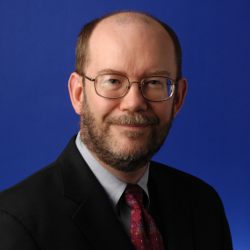
In his delightful 1928 children’s book, The House at Pooh Corner, A. A. Milne introduces us to Tigger, a tiger (and friend of Winnie-the-Pooh) with rather unusual tastes and behavior, who lives in the Hundred Acre Wood. Disney brought Tigger to animated life in the 1968 movie, Winnie the Pooh and the Blustery Day. In the movie, Tigger sings about the The Wonderful Things about Tiggers, noting with glee, "the most wonderful thing about Tiggers is I’m the only one. Yes, I’m the only one."
All too often, I find myself thinking about Tigger during frequent conversations about cyberinfrastructure, the computing, storage, networks, software and staff who support research data archives and computing systems. Why, you might ask? It is because we find it difficult to replicate and sustain cyberinfrastructure, whether at the international, national, regional or campus levels, for the long periods needed to preserve digital artifacts and to reap the benefits of cross-disciplinary, longitudinal data fusion and multidisciplinary modeling. Each deployed system is like Tigger; it’s the only one, unique in its characteristics and capabilities.
Paradoxically, the rapid ferment in computing is both a benefit and a hindrance. The benefits of change are obvious, yielding a cornucopia of new consumer devices and rich cloud services; an unprecedented scale and richness of data, made possible by high-resolution scientific instruments, social media and e-commerce interactions, and a dizzying array of environmental and biological sensors; and higher-performance computing (HPC) systems of ever-rising performance and capability. Every year, what was new and exciting quickly becomes passé, obviated by new technological innovations.
The hindrance of computing change is less obvious, but very real. Any deployment of data archives or computing systems is quickly obviated by newer technology with greater capacity and lower cost. However, the consequences of this change are far more serious and deleterious than mere technological obsolesce. They shape our research psychology, lessen our commitment to continued reinvestment and sustainability, and minimize the most important aspect of sustainable cyberinfrastructure, the cadre of experienced staff with institutional and historical context who operate that infrastructure.
In this, we in computing are unusual, if not unique. Most other capital investments, whether electrical generators, manufacturing plants, or commercial or university buildings, presume a ten, twenty or even thirty year capital depreciation schedule. Rare is the computer system still in operation after five years. Rarer still is the research data preserved for use by other disciplines when the data cease to have value to either the research team or that produced it or cognate disciplines.
The latter is particularly worrisome, because the longitudinal value of research data often accrues to disciplines other than those where it was created. This is equally true for scientific research and for multidisciplinary attacks on wicked problems in environmental sustainability and climate change, healthcare and aging populations, economic disruption and social change.
Tigger is not the right role model for sustainable cyberinfrastructure. We need a new model that judiciously balances investment between the "next big thing" and sustainable cyberinfrastructure, for the latter is itself a crucial enabler of discovery.
As Winnie-the-Pooh would say, Oh, bother!



Join the Discussion (0)
Become a Member or Sign In to Post a Comment